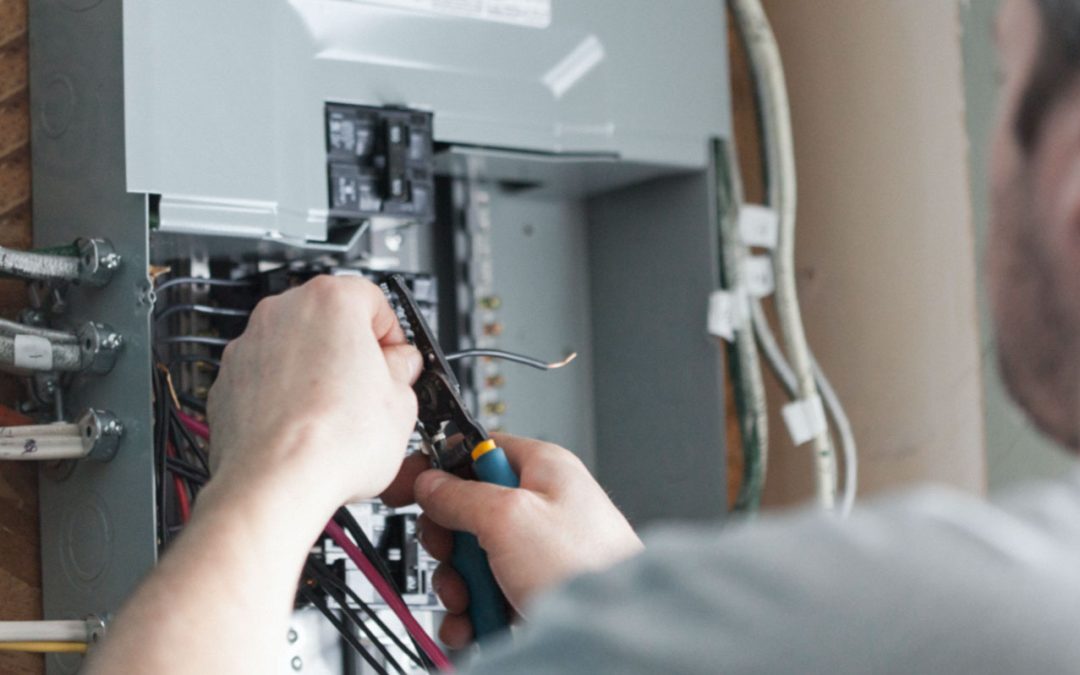Introduction
Upgrading an electric panel is an essential step for ensuring your home’s electrical system is safe, efficient, and capable of handling modern power demands. Whether you’re experiencing frequent breaker trips, flickering lights, or planning to install new appliances, a panel upgrade may be necessary. This guide outlines the key factors to consider when upgrading your electric panel, from hiring the right electrician to ensuring proper grounding and labeling.
Check if an Upgrade is Necessary
Determining whether your electric panel needs an upgrade is the first step. If you experience frequent circuit breaker trips, flickering or dimming lights, or an overreliance on power strips and extension cords, your current panel may be insufficient. Homes with outdated 100-amp panels that require 200 amps, as well as those with older or recalled panels like Zinsco or Federal Pacific, should also consider an upgrade for safety and efficiency.
Hire a Licensed Electrician
Electrical work is dangerous and should only be performed by a licensed electrician. Attempting a panel upgrade without the proper qualifications can result in serious safety hazards. To ensure a safe and reliable installation, choose an electrician who is licensed, insured, and experienced in panel upgrades.
Permits & Inspections
Upgrading an electrical panel typically requires permits and an inspection to comply with local electrical codes. The permit ensures the work is done legally and safely, while the inspection verifies that the installation meets all safety standards.
Power Will Be Shut Off
During the panel upgrade, expect your home’s power to be turned off for several hours. It is important to plan ahead, especially if you rely on electrically powered medical devices or work from home. Being prepared can help minimize disruptions and inconvenience.
Choose the Right Panel Size
Most modern homes require a 200-amp panel to support increasing electrical demands. When upgrading, consider choosing a panel with extra breaker slots to accommodate future appliances, home additions, or an electric vehicle (EV) charger.
Verify Grounding & Bonding
Older homes may have outdated or improper grounding systems, which can pose safety risks. A panel upgrade may require upgrading the home’s grounding and bonding system to protect against electrical shocks and enhance system performance. Proper grounding is essential for a safe and reliable electrical system.
Ensure Labeling is Clear
A well-labeled electrical panel makes maintenance and troubleshooting much easier. Each breaker should be clearly labeled (e.g., “Kitchen Lights” or “Living Room Outlets”) so that circuits can be identified quickly. Asking your electrician to organize and label the panel properly will make future electrical work more manageable.
Get a Warranty
Before finalizing the upgrade, ask your electrician about any warranties on labor and panel components. Some professionals offer guarantees on their work, which provides peace of mind and protection against potential issues. Understanding the warranty terms ensures you receive reliable service and long-term security for your new panel.
Conclusion
Upgrading your electric panel is a crucial investment in your home’s electrical safety and efficiency. By assessing the need for an upgrade, hiring a licensed electrician, obtaining permits, and ensuring proper grounding, you can enhance your home’s power capacity while staying up to code. Additionally, choosing the right panel size, ensuring clear labeling, and securing a warranty will help future-proof your electrical system. Proper planning and professional installation will ensure a smooth and successful upgrade.

